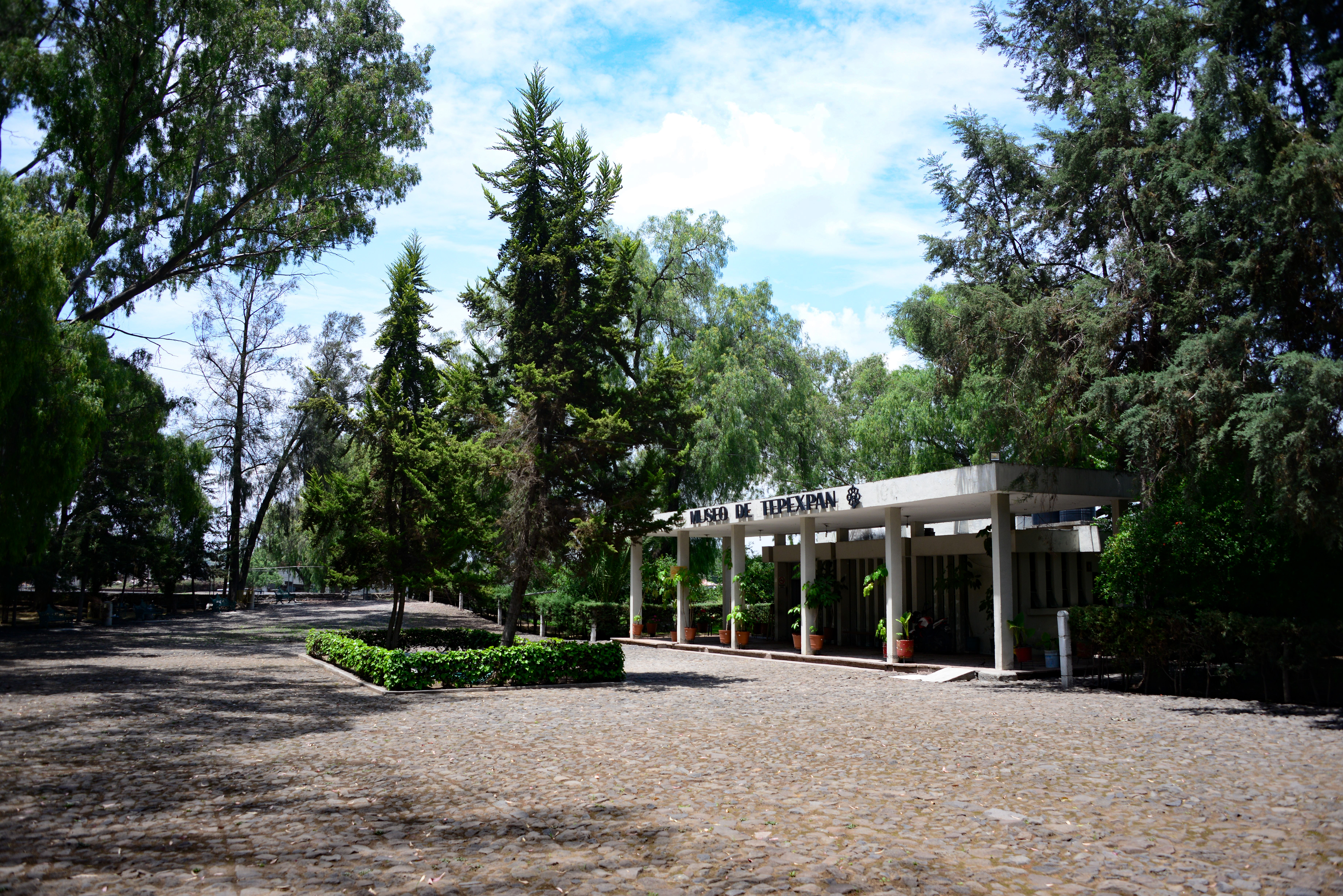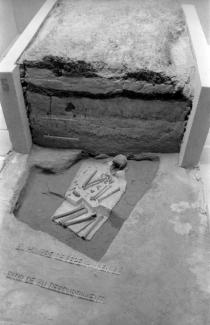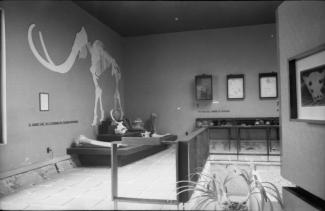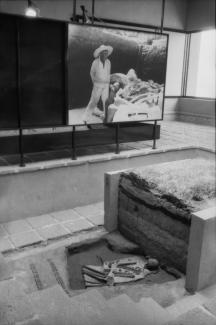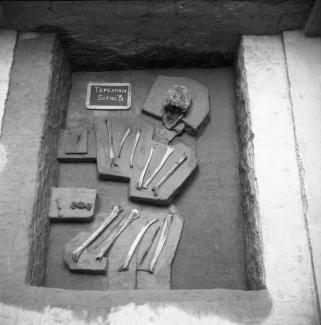The museum was built in 1955 to display 7,000-year-old human bones. At the time they were the most ancient human remains found in the Americas. The museum is on the site of their discovery and it also displays fossils of Pleistocene fauna, which were regularly found in the vicinity of the site. The Tepexpan Museum collection consists of paleontological and stone artifacts including human and animal bones and stone tools found at the site. The storyline focuses on the pre-history of the basin of Mexico. The museum also gives information about several theories on the origins of life and of man, and it also features a large-scale picture of a mammoth hunt. Human skulls from the Pre-ceramic Skull Collection are also displayed, and to date these are the oldest found in the basin of Mexico. Photographs provide insight into the work of INAH staff in the field, the laboratory and the research process. The display includes a table of geological time which explains the age of the Earth, as well as the lifeforms which have emerged, including mankind, with our capacity for tool making, hunting and encoding language in symbols.
The architecture is modernist, with two rectangular volumes. The main facade of the first features flagstones supported by six columns. The temporary exhibition gallery on INAH’s recent work at the State of Mexico INAH Center comes first and has space for 20 visitors. The permanent exhibition gallery conserves the actual site on which Dr. Helmut de Terra and the engineer Alberto R.V. Arellano discovered the remains of Tepexpan Man in 1947. Today, the oldest remains are of Tlapacoya Man, 12,000 years old, discovered in 1968.
Research into the human and animal remains of Tepexpan was led by the physical anthropologist Javier Romero Molina, while stratigraphic anthropological data was handled by Alberto R.V. Arellano, and Helmut de Terra took charge of the geology. They concluded that the human remains at Tepexpan belonged to homo sapiens specimens contemporary with the elephant fossils and stone artifacts already found on the site, dating to the Pleistocene, which began 2.59 million years ago and ended in 10000 BC. Artifacts from this period have been found in the southwest of the United States, including at the well-known Folson excavations, but none had been found in Mexico, which accounts for the high level of interest in Tepexpan Man.
After the discovery and research, it was proposed to build a museum to Mexican prehistory, and this opened in 1955 as the Tepexpan Prehistory Museum.








